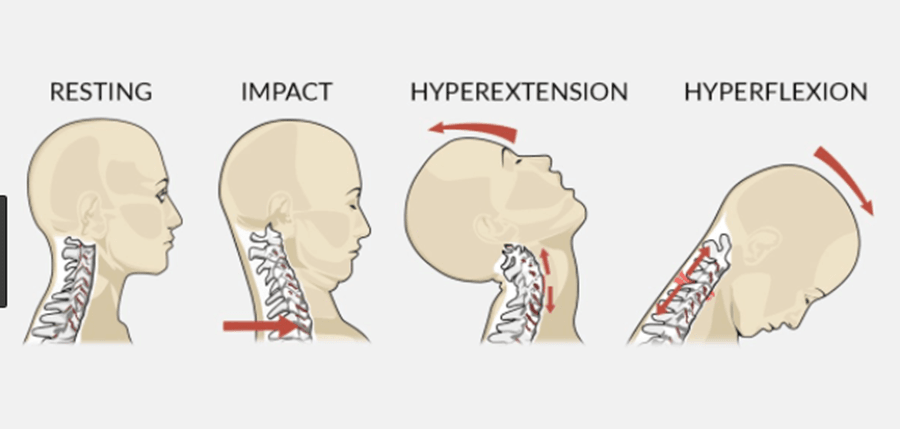“Whiplash is a neck injury due to forceful, rapid back-and-forth movement of the neck, like the cracking of a whip” (Mayo Clinic, 2020).
What causes whiplash?
Commonly, whiplash is caused by the impact of an auto accident. However, there are other causes. For instance, “sports accidents, physical abuse and other types of traumas, such as a fall” can cause whiplash. “Whiplash can occur if you are punched or shaken. It’s one of the injuries seen in shaken baby syndrome” (Mayo Clinic, 2020).
What are the symptoms of whiplash?
The main symptom of whiplash is neck pain and stiffness of the neck. This pain and stiffness may also be felt in the surrounding musculature. A patient with whiplash may find it difficult to turn their head from side to side, due to the muscles being extremely tight and tender. In this state, the muscles may feel very fatigued and in some cases make the patient feel dizzy or light-headed. Headaches are also a common symptom amongst patients with whiplash. Mayo Clinic (2020) states that some patients may also experience blurred vision, ringing in the ears (tinnitus), sleep disturbances, irritability, difficulty concentrating, memory problems, and depression.

How does one treat whiplash?
During the initial exam, a licensed doctor will determine what kind of images will need to be taken of the patient. Typically, the doctor will have the patient get x-rays to begin with. This allows the doctor to see if there has been any damage to the bones. If the condition stays the same or worsens over the course of a treatment plan, the patient will have to get an MRI to see if there has been any damage to the musculature, disc or soft tissue surrounding the spine. Once the doctor has made a diagnosis, he/she will put the patient on a treatment plan. These treatment plans may include, but are not limited to, chiropractic adjustments, physical rehabilitation, massage therapy, electric muscle stimulation, etc. In the first phase of care, “the doctor may recommend one or more of the following treatments to lessen pain: rest, heat or cold, over-the-counter pain medications, prescription medications, muscle relaxants, injections” (Mayo Clinic, 2020).
The first phase of the treatment plan is designed “to achieve pain management, timely return to normal daily activities, and the prevention of chronicity” (Leigh et al., 2005). The second phase of the treatment plan is designed to “increase strength, mobility and function, reduce pain, [and] return to normal activities ASAP” (Leigh et al., 2005). The third phase of the treatment plan is designed to “educate [the patient] on coping strategies, encourage return to normal social activities, and continue to increase function” (Leigh et al., 2005). The fourth phase of the treatment plan is designed to “increase function and promote full return to activities” (Leigh et al., 2005). The fifth phase of the treatment plan is designed to “follow phase four goals for those patients that exhibit symptoms greater than 12 weeks. A multi-disciplinary approach may be required” (Leigh et al., 2005).
Work Cited
Whiplash. (2020, February 05). Retrieved July 09, 2020, from https://www.mayoclinic.org/diseases-conditions/whiplash/symptoms-causes/syc-20378921
Leigh, T., Yardley, T., & Smith, C. (2005). Clinical Practice Guidelines for Physiotherapy Management of Patients with Whiplash Associated Disorders (WAD): *Summary Version for Quick Reference. Vancouver, BC: Physiotherapy Association of British Columbia.
Brownlee, R. (n.d.). Retrieved July 14, 2020, from https://www.welcomebackclinic.com/blog/Whiplash—Neck-Injury.htm
- (2009, September). Whiplash. Retrieved July 14, 2020, from https://www.health.harvard.edu/newsletter_article/Whiplash
